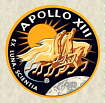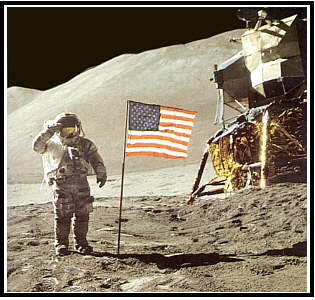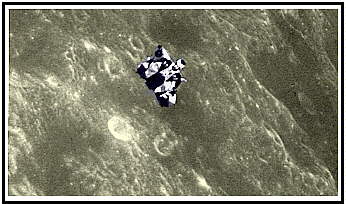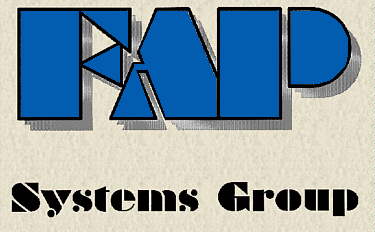LM 1
LM 1 at the Cape
|
This was the first flight test of the Apollo LM. The flight verified ascent-and descent-stage propulsion systems, including restart and throttle operations. It also evaluated LM staging and fourth-stage orbital performance.
![]()
LM 2
LM 2....Today
LM-2 was meant to be used in low Earth orbit to test the techniques of separation, rendezvous, and docking with the command and service module. The second of two such test vehicles, its mission was cancelled because of the complete success of the first flight. It currently can be seen at the National Aeronautics and Space Museum,Washington DC
![]()
LM3 "Spider"
LM 3 in Earth Orbit
|
This was the first manned flight of the complete Apollo spacecraft including the LM. The mission was to test the entire integrated system, especially a manned test flight of the independent LM, and to rendezvous between the LM and CSM (CSM-104). Two crew members conducted extravehicular activities (EVAs) and a simulated LM rescue was conducted. The flight was successful and all objectives were met. Splashdown in the Atlantic came after 241 hours 1 minute.
![]()
LM 4 "Snoopy"
LM 4 Ascent Stage
|
The mission of Apollo 10 was to conduct all phases of Apollo spacecraft operations except the actual lunar landing, including rendezvous and docking between the CSM and LM in lunar orbit and descent of the LM to within 50,000 feet of the moon's surface. The SPS was restarted on the 31st lunar orbit, bringing the mission to a Pacific splashdown after 192 hours 3 minutes.
![]()
LM 5 "Eagle"
LM 5 reflected in the vizor of Buzz Aldrin
|
|
This mission conducted the first manned landing on a celestial body other than earth, touching down on the surface of the moon on 20 July 1969. Apollo 11 entered lunar orbit on 19 July, 75 hours 50 minutes into the mission. At 101 hours 12 minutes, Aldrin and Armstrong in LM-5 (Eagle) separated from CSM-107 (Columbia) to make their descent to the lunar surface, where they landed in the Sea of Tranquility (0" 4'15" N lat/23" 26' E long) at 102 hours 45 minutes into the mission. Neil Armstrong became the first human being to set foot on the moon at 109 hours 42 minutes, and was followed by Aldrin 20 minutes later. The total elapsed time spent by the two men outside the spacecraft during EVA was 2 hours 30 minutes, ending at 111 hours 39 minutes.They both walked about 300 feet from the LM, gathered 44 pounds of rock samples and conducted other scientific evaluations. At 124 hours 22 minutes, the Eagle's ascent stage was fired and Eagle re-docked with Columbia at 128 hours 3 minutes. The LM was separated from the CSM, which returned to earth and splashed down in the Pacific at 195 hours18 minutes.
![]()
LM 6 "Intrepid"

A closeup of LM 6 on the moon....note the bent lunar contact probe on the foreground leg.
|
 |
The mission made a precision landing on the lunar surface in the Sea of Storms on 19 November at 110 hours 32 minutes, 535 feet northwest of the unmanned lunarlander, Surveyor 3, which had soft-landed on 20 April 1967. Surveyor was examined, photographed and its l7-pound television camera and other parts recovered. The Apollo Lunar Surface Experiments Package (ALSEP) was deployed and left on the moon's surface to gather scientific,seismic and engineering data over a long period. The mission collected 75 pounds of lunar material and ended after 244 hours 36 minutes with splashdown in the Pacific.
![]()
LM 7 "Aquarius"
"SCAT" view of LM 7's aft equipment bay.
|
 |
The intended mission was to effect the third soft landing on the moon, but the landing was aborted because of systems failure. At 55 hours 55 minutes into the mission, after a trouble-plagued launch, an electrical short circuit caused an explosion and fire in the Service Module that resulted in failure of the spacecraft's number two oxygen tank and loss of most of the electrical power in the Command Module. At 61 hours 30 minutes, the spacecraft had reached the moon and effected a mid-course maneuver by firing the LM's descent engine to put it on a return-to-earth trajectory. Although the life support system of the CM was damaged, there was just enough oxygen available in the LM Aquarius to use it as a 'lifeboat' to get the crew back to earth safely, where they splashed down in the Pacific.
![]()
LM 8 "Antares"
A lonely looking LM 8..... note the Equiptment Transporter tracks.
|
 |
The Apollo 14 spacecraft (CSM-110 Kitty Hawk and LM-8 Antares) weighed more than any previous Apollo craft because of safety modifications introduced in the wake of the nearly disastrous Apollo 13 flight. Antares landed in the Fra Mauro Crater, 110 miles east of Apollo 12 on 5 February. The astronauts spent a record of 9 hours 24 minutes outside theLM on the surface deploying the ALSEP and collecting 94 pounds of lunar material for 187 projects in the US and 14 foreign countries. The Kitty Hawk returned to earth for a Pacific splashdown 216 hours 2 minutes after launch.
![]()
LM 9
This is the H-series LM 9, which is on display at the Saturn V Center at KSC. It was orginally scheduled for Apollo 15, but was replaced with LM 10 which was a J-Series "extented stay" LM. It currently is configured "as built by Grumman" --- ready to go to the moon. LM 9 is suspended on four cables attached to the landing gear outriggers. These are the same points used to attach the LM to the Spacecraft Lunar Module Adapter (SLA).
![]()
LM 10 "Falcon"

LM 10 listing 11 degrees
|
The fourth successful manned lunar landing, this was also the first of the Apollo J missions capable of a longer stay on the lunar surface and the first to carry the LRV. The total EVA time on the lunar surface was a record 18 hours 37 minutes. Extensive documentation of geologic features was accomplished and 173 pounds of lunar samples were collected. Other activities included deployment of the ALSEP array and drilling for a core sample 10 feet below the lunar surface. The lift-off of the ascent module of the Falcon LM-10 was the first seen on earth via television. Falcon rejoined the CSM on the latter's 50th lunar orbit and the particles and fields (P&F) subsatellite was released on the 74th orbit. On the return to earth, Worden conducted the first deep-space EVA, collecting film cassettes from the SM. Splashdown was in the Pacific after a record 295 hours.
![]()
LM 11 "Orion"

|
The second of the Apollo J series missions included a total of 20 hours 14 minutes of EVA on the lunar surface in which Duke and Young deployed the ALSEP and conducted extensive surface travel aboard the LRV. During the surface exploration new lunar terrain data was obtained, along with 209 Pounds of lunar samples. Because of guidance problems and yaw oscillations encountered in the SM propulsion system prior to the landing, NASA decided beforehand to cut the mission short. Having released a P&F satellite in lunar orbit, the CSM returned to earth a day early, splashing down after 265 hours 51 minutes.
![]()
LM 12 "Challenger"

Rendezvous of LM 12....the last flight of the Grumman "Bug"
|
The third of three Apollo J-series missions was also the sixth and final successful American lunar landing. The ALSEP was deployed, and Cernan and Schmidt conducted an extensive survey of the lunar surface aboard the LRV. Soil samples taken at Shorty Crater revealed for the first time orange-colored material in the soil. The last human activity on the moon's surface during the Apollo program came at 5:23 pm EST on 13 December 1972, with lift-off of the LM ascent module at 5:55 pm. Splashdown in the Pacific occurred after 301 hours 51 minutes.
![]()

| © 1997 FAP Systems Group All rights reserved. |